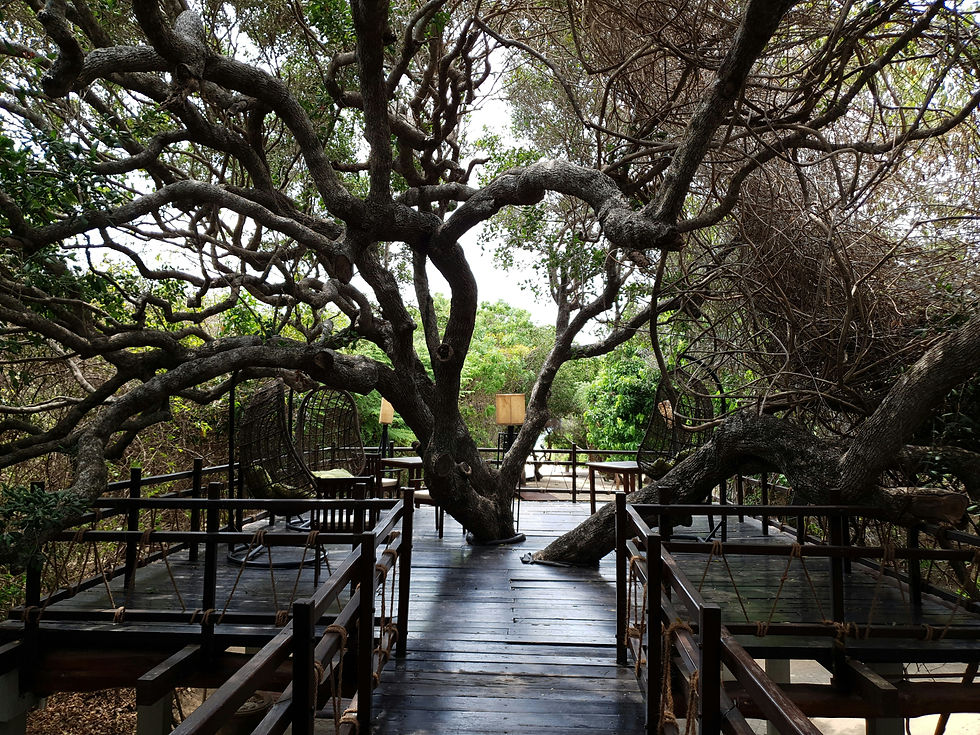The Quiet Revolution Redefining Hospitality Through Sustainability & Design
- Zara Abeywardena

- Oct 15
- 3 min read

Sri Lanka is many things.
A lush island of rainforests and coral reefs. A culture shaped by kings and spice routes. A coastline kissed by sunrises and monsoons. But perhaps more than anything right now, Sri Lanka is a country at a crossroads - especially when it comes to tourism.
After a decade of rapid development, followed by disruption, pause, and reflection, there is a new mood in the air. One of cautious optimism. And with it, a bold question: What if Sri Lanka became not just a tourist destination, but a global leader in sustainable travel?
That is not a dream. It is already in motion. And it starts with rethinking how we build - from the villas and retreats tucked into the Central Highlands to the beach hotels along the southern coast.
Design That Heals, Not Hurts
The next wave of Sri Lankan tourism will not be about more rooms, more resorts, or more rooftops. It will be about design that integrates, not dominates.
Architecture that speaks softly. Buildings that breathe.
Across the island, architects, hoteliers, and developers are starting to adopt a more environmentally conscious lens - embracing solar energy, passive cooling, local materials, and bioclimatic principles that work with the landscape rather than against it.

From off grid wellness retreats in Dambulla to solar powered bungalows in Ella, a quiet revolution is underway. New projects are seeking not only to meet demand, but to model how tourism infrastructure can regenerate rather than deplete.
What Sustainability Really Means Here
In the Sri Lankan context, sustainability must go beyond solar panels and water recycling (although both are critical). It also means:
Minimising imported materials and favouring traditional craftsmanship
Working with the land - not bulldozing it into submission
Supporting local communities through fair wages and shared ownership
Blending heritage with innovation, rather than erasing the past for progress
It is about respecting the genius of vernacular design - the way ancient homes captured airflow, the way clay floors stay cool in summer, the way village wells collected rainwater long before “harvesting” became a buzzword.
Clean Energy, Clean Conscience
Electricity is one of the largest cost drivers in Sri Lanka’s hospitality sector. So moving toward renewable sources is not just good for the planet - it is good business.

Already, several leading properties are shifting toward solar, wind, and biomass energy, not just to power operations but to demonstrate a new kind of leadership. The potential for eco resorts powered entirely by solar farms, for green certification becoming standard, and for guests to offset their carbon footprint as part of the booking process is no longer hypothetical... it is expected.
Tourists today are smarter. They are voting with their wallets. And what they want is clear: experiences that feel good and do good.
Innovation with a Local Accent
Sri Lanka does not need to import green technology wholesale. Much of what is needed is already here - in our craft traditions, local engineering talent, and natural materials. The challenge is bridging old wisdom with new systems.

Think compressed earth blocks instead of concrete, native plant landscaping instead of imported turf, clay tile roofs instead of steel, and zero plastic bathroom amenities sourced from island artisans. These are not compromises. They are upgrades.
This is also a massive opportunity for green entrepreneurs—from solar startups to bamboo builders to climate tech investors - to embed themselves into the country’s tourism rebirth.
Shifting the Narrative
Too often, sustainability in travel is framed as a niche. A nice to have. A marketing bullet point buried at the bottom of a brochure.
But what if, in Sri Lanka, it became the story itself?
Imagine a future where the world visits our island not just for its beauty, but for the way we protect that beauty. Where our tourism industry becomes a case study in conscious development. Where every room built, every trail carved, every beach cleaned tells the same story: we are guardians of this place, not just hosts.
It is not only possible. It is already happening.

Sri Lanka is standing at a powerful intersection of tradition and innovation. And as tourism continues its comeback, the choices we make now - about how we design, power, and position our hospitality infrastructure - will define not just our economic recovery, but our cultural identity.
Because at the end of the day, sustainability is not just a checklist. It is a mindset. A promise to our land. And perhaps, the most Sri Lankan thing we can do is to lead the world not with volume, but with wisdom.
Curious about sustainable stays in Sri Lanka?
Our Sri Lanka Living Concierge Team is curating a special list of the island’s most thoughtful, eco conscious hotels, retreats, and villas - each one designed to tread lightly and live beautifully. Reach out to plan a journey that is both inspiring and impact driven.




Comments